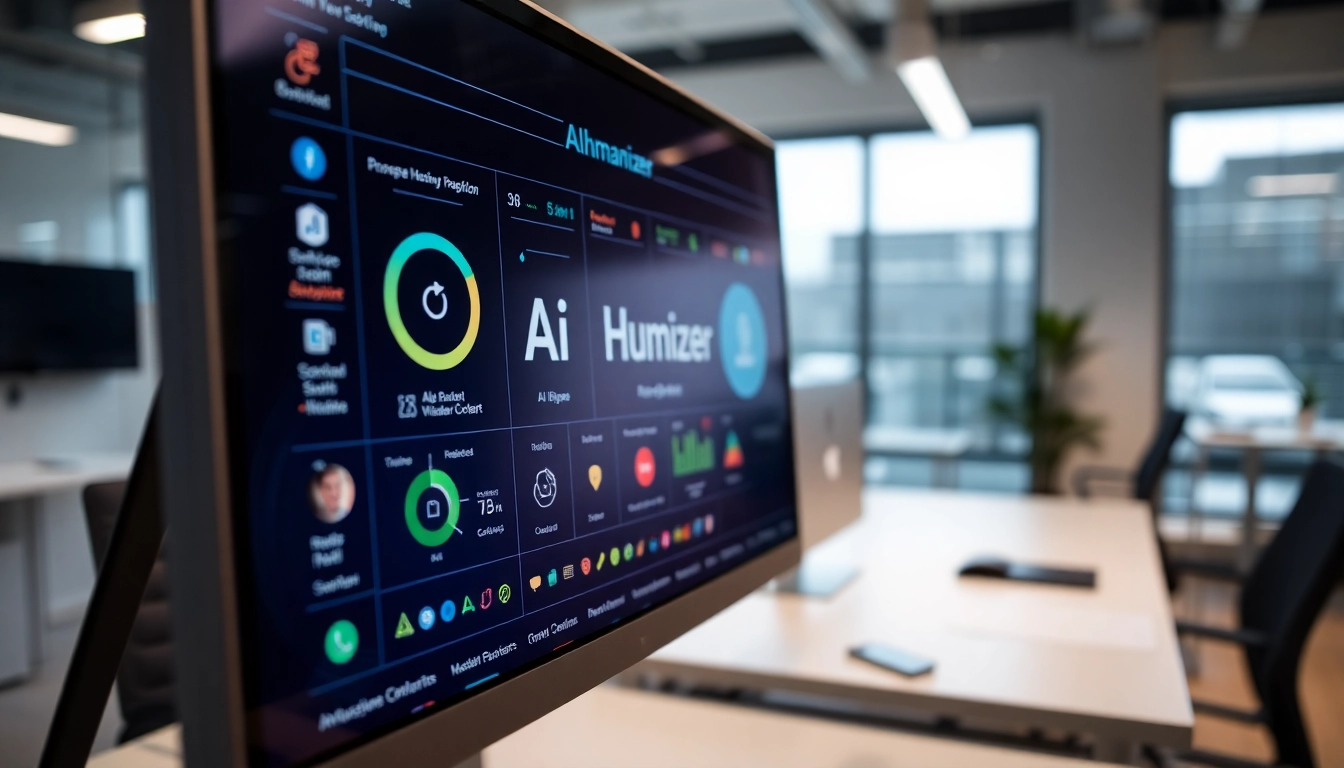Harnessing AI Automation for Smarter Business Processes
In today’s fast-paced digital landscape, businesses constantly strive to optimize workflows, reduce manual effort, and accelerate growth. One of the most transformative advancements driving this evolution is AI automation. By leveraging cutting-edge technologies such as machine learning, natural language processing (NLP), and intelligent algorithms, organizations can automate routine tasks, improve accuracy, and free up valuable human resources for more strategic initiatives.
This comprehensive guide explores the depths of AI automation—what it is, how it functions, and how your business can harness its power to achieve operational excellence. With practical insights, proven methodologies, and real-world examples, you’ll discover the step-by-step process to integrate AI automation seamlessly into your existing workflows, overcome common challenges, and position your enterprise for future growth.
Understanding AI Automation and Its Business Impact
What Is AI Automation and How Does It Work?
AI automation refers to the deployment of artificial intelligence technologies to perform tasks that traditionally required human intervention. Unlike simple rule-based automation, which follows predefined instructions, AI-driven automation learns from data, adapts to new situations, and makes intelligent decisions on its own. This enables businesses to automate complex processes that involve unstructured data, nuanced decision-making, or dynamic environments.
For instance, AI automation can handle customer inquiries through chatbots that understand natural language, process invoices with minimal human oversight, or analyze large datasets to uncover actionable insights. The core idea lies in combining AI’s cognitive capabilities with automation platforms to create systems that operate intelligently and autonomously, significantly reducing manual workload and operational costs.
Key Technologies Behind AI Automation: Machine Learning & NLP
Two foundational technologies power AI automation:
- Machine Learning (ML): ML algorithms enable computers to learn from data, identify patterns, and improve their performance over time without explicit programming. This allows AI systems to adapt to new data inputs and optimize workflows continuously.
- Natural Language Processing (NLP): NLP equips AI with the ability to comprehend, interpret, and generate human language. This technology underpins chatbots, voice assistants, and automated content creation, making interactions more natural and intuitive.
These technologies work in tandem within automation platforms to facilitate intelligent decision-making, predictive analytics, and context-aware responses, thereby enhancing operational efficiency and customer experience.
Examples of AI Automation in Modern Industries
AI automation is revolutionizing various sectors:
- Customer Service: Chatbots powered by NLP handle common inquiries, freeing up human agents for complex issues.
- Finance: Automated fraud detection, credit scoring, and invoice processing streamline financial operations.
- Healthcare: AI-driven diagnostics, patient triage, and administrative automation improve care quality and reduce workload.
- Manufacturing: Predictive maintenance and supply chain automation minimize downtime and optimize resource allocation.
- Marketing: Content generation, campaign automation, and audience segmentation driven by AI enhance marketing effectiveness.
These examples illustrate the broad potential of AI automation to improve productivity, reduce errors, and deliver superior customer value across industries.
Steps to Integrate AI Automation into Your Business
Mapping Your Processes for Automation Potential
The first and crucial step is understanding your current workflows. Conduct a thorough analysis to identify repetitive, rule-based, or data-intensive tasks that can benefit from automation. Create process maps highlighting:
- Tasks with high manual effort and error rates
- Activities involving structured or semi-structured data
- Processes with predictable decision points
Involving cross-functional teams can reveal hidden inefficiencies and foster a culture of continuous improvement. Platforms like FlowBuildr assist in visualizing these workflows and assessing automation readiness.
Selecting the Right AI Tools and Platforms
An array of AI automation tools exists, each suited for different needs:
- n8n: An open-source workflow automation tool allowing customization with minimal coding, ideal for flexible, scalable processes.
- HubSpot & CRM integrations:
- Make & Zapier: User-friendly platforms for connecting diverse apps and automating actions across systems.
- AI-specific services: Platforms like Salesforce Einstein, IBM Watson, or Automation Anywhere offering advanced AI capabilities such as predictive analytics, intelligent document processing, and natural language understanding.
To automate customer communication and data synchronization.
Choosing the right platform depends on your business size, complexity, technical expertise, and integration needs. Focus on scalability, ease of use, and security features to ensure long-term success.
Building and Testing Custom Automation Flows
Once suitable tools are selected, design automation workflows that mirror your mapped processes. This involves:
- Defining trigger points (e.g., form submission, email receipt)
- Building sequence logic incorporating AI elements (e.g., sentiment analysis, predictive actions)
- Testing each flow thoroughly in a sandbox environment
- Collecting feedback and iterating to optimize performance
Using platforms like FlowBuildr, entrepreneurs can build automation with or without code, ensuring workflows are logical, maintainable, and adaptable.
Best Practices for Effective AI Automation Deployment
Ensuring Data Quality and Security
AI systems are only as good as the data they process. Guarantee high-quality, consistent, and unbiased data input to maximize accuracy. Establish data governance protocols, access controls, and compliance measures such as GDPR or HIPAA regulations to protect sensitive information.
Maintaining Flexibility and Scalability
Design automation workflows that are modular and scalable. As your business grows from tens to thousands of customers, your automation should expand seamlessly. Cloud-based platforms and APIs facilitate flexible integration, allowing you to adapt to changing needs without significant rework.
Measuring Performance and ROI
Track key metrics such as time saved, error reduction, customer satisfaction, and revenue impact. Use automated dashboards that visualize real-time data, enabling swift decision-making and demonstrating clear ROI. For example, clients of FlowBuildr have achieved an average of 60-80% process time reduction, validating the effectiveness of their automation investments.
Overcoming Common Challenges in AI Automation Adoption
Managing Change and Employee Engagement
One of the primary hurdles is employee resistance. Communicate transparently about automation goals, emphasizing that AI supports—rather than replaces—human talent. Invest in training and involve staff in the development process to foster buy-in and foster an automation-friendly culture.
Dealing with Integration Complexity
Integrating AI solutions with existing legacy systems can be complex. Selecting automation platforms with extensive pre-built integrations, like Zapier or Make, simplifies this process. Additionally, employing middleware or APIs ensures smooth data flow and minimizes disruption.
Continuous Improvement and Updating Automations
Automation is not a one-time setup; it requires ongoing monitoring, feedback, and refinement. Establish regular review cycles, incorporate user feedback, and stay updated on emerging AI capabilities. Leveraging AI agents that learn and adapt over time ensures sustained value.
Future Trends and Opportunities in AI Automation
Evolving Technologies and Emerging Tools
The field of AI automation is rapidly advancing. Future innovations include more sophisticated natural language understanding, explainable AI for transparent decision-making, and edge AI enabling real-time processing at the device level. Additionally, new tools like generative AI are transforming content creation and customer engagement.
Expanding AI Automation Across Business Functions
Initially focused on operations and customer service, AI automation now permeates areas such as product development, supply chain management, and strategic planning. Integrating AI across departments fosters a unified, intelligent enterprise capable of proactive responses and innovation.
Leveraging Data Analytics for Strategic Growth
AI generates vast amounts of data insights. Smart analytics tools enable businesses to understand customer behavior, forecast market trends, and optimize resource allocation. Combining AI automation with advanced data analytics positions organizations for sustained competitive advantage.













